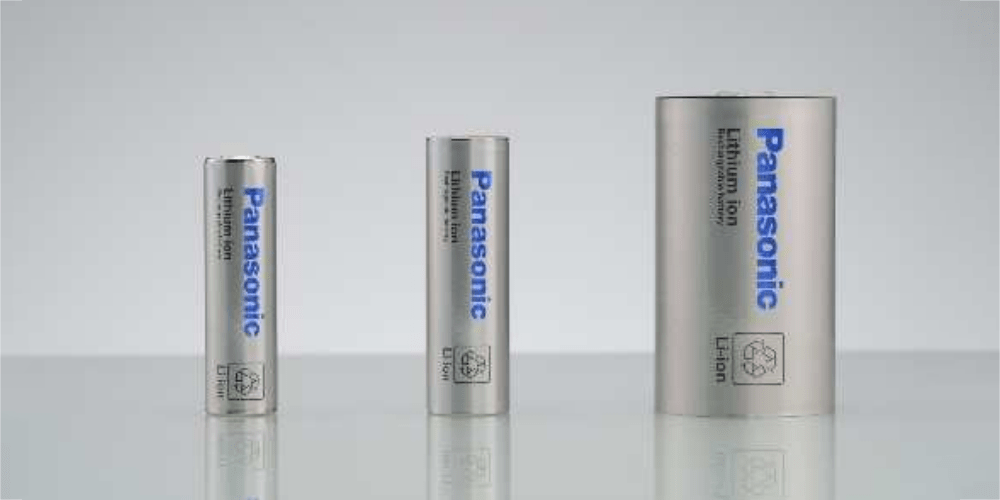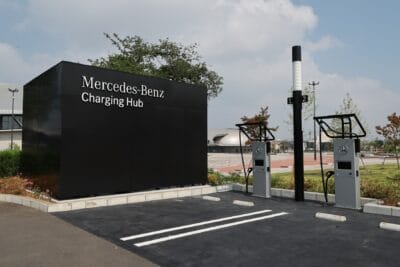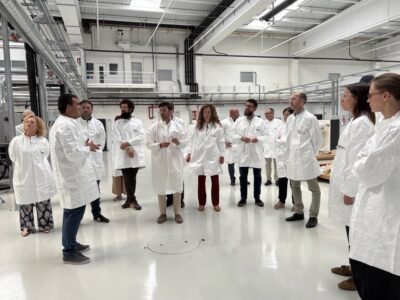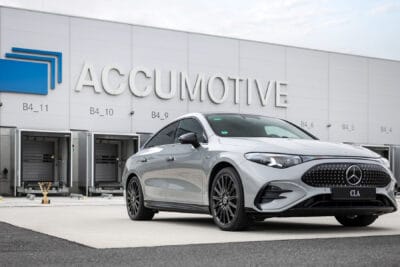Mazda may use Panasonic cylindrical cells in future electric cars
Mazda said it would commence “concrete discussions” with a view toward Panasonic Energy supplying the carmaker with cylindrical lithium-ion batteries manufactured at Panasonic’s plants in Japan and North America. No mention was made of the format, but Mazda would join carmakers such as Stellantis, BMW, Lucid Motor, and of course, Tesla, in relying on cells made by Panasonic.
Mazda plans to install these batteries in EVs scheduled to be launched in the latter half of the 2020 decade, in line with Mazda’s EV strategy until 2030. Announced June 2021, Mazda, in November 2022, had raised its sales target for all-electric cars to 40 per cent of total sales by 2030, up from 25%.
At the time, Mazda was also considering investing in battery production but now appears to have swung onto a path of partnership, a strategy the company is employing across all EV components. Mazda already has agreements with seven partners to develop parts for electric cars. In addition, the company has a supply deal with the battery manufacturer Envision AESC, but only for a limited period between 2025 and 2027. The potential partnership with Panasonic would likely go beyond and start around 2028 when Mazda considers phase three of its electrification plan.
Masahiro Moro, Director and Senior Managing Executive Officer of Mazda, who reportedly takes over from CEO Akira Marumoto this month, hinted as much today. He said Mazda was working with its partners in three phases to respond flexibly to changes in regulatory trends, consumer needs, and other areas. “We are delighted to collaborate with Panasonic Energy, which has been a pioneer in automotive lithium-ion batteries, developing high-quality products.”
Mazda also mentioned that they worked with Panasonic Group before when the carmaker installed Panasonic batteries in its Demio EV, which the company had leased in Japan since 2012. Yet despite this early effort, Mazda has to release a substantial EV. So far, there is the MX-30 that was available only in small numbers as a BEV and uses 192 prismatic cells. The carmaker then released a serial hybrid version in the form of the MX-30 e-Skyactiv R-EV with a Wankel engine as a range extender this January. The electric platform called ‘Skyactiv EV Scalable Architecture’ was also mentioned in last year’s strategic plan but lacks detail.
As for Panasonic, the company, in May 2023, set new targets to increase its annual EV battery cell production to 200 GWh by March 2031. That would be around four times what it currently produces. To do so, Panasonic is focusing on production in North America.
This, in turn, is again well in line with Mazda. The company is expected to invest in EV production in the USA from 2026 or 2027 to make future EVs eligible for tax credits under the US Inflation Reduction Act. Concrete plans have yet to be announced, but Panasonic is heavily invested in US production. Moreover, incoming Mazda CEO Moro is credited with pushing sales in North America, where the carmaker makes 36 per cent of its business. Moro has been with Mazda for 40 years and led Mazda in Europe from 2004 to 2008. In 2016, he was named CEO of Mazda Motor of America.
Update 2 April 2024
After Subaru, Panasonic has now signed an agreement with Mazda for the supply of cylindrical cells for future electric cars. Mazda and Panasonic began corresponding talks in June 2023 (see above).
Another parallel to Panasonic’s Subaru deal: in their brief announcements, the two Japanese companies only state that they have reached an agreement. However, “details regarding this partnership will be communicated at the appropriate time.”
“Through this agreement, both companies reaffirm their commitment to addressing various societal challenges, such as mitigating global warming, promoting sustainable growth within the automotive and battery sectors, supporting local employment, and fostering talent development,” it says in the press release.
mazda.com, mazda.com, panasonic.com (both update)





0 Comments